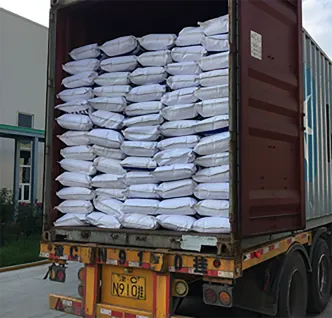
Nov . 27, 2024 01:29 Back to list
Exploring the Applications and Benefits of Hydroxypropyl Methyl Cellulose in Various Industries
Understanding HPMC Hydroxypropyl Methylcellulose
Hydroxypropyl Methylcellulose (HPMC) is a versatile and widely utilized cellulose ether that has gained popularity in various industries, including pharmaceuticals, food, cosmetics, and construction. Derived from natural cellulose, HPMC offers a range of beneficial properties that make it an essential ingredient in numerous formulations.
What is HPMC?
HPMC is a non-ionic polysaccharide obtained by the chemical modification of cellulose, a natural polymer sourced from plant fibers. The process involves the substitution of hydroxyl groups on the cellulose molecule with hydroxypropyl and methoxy groups. This modification endows HPMC with unique characteristics such as increased solubility in cold water, improved thermal stability, and enhanced film-forming abilities.
Applications in Pharmaceuticals
In the pharmaceutical industry, HPMC plays a pivotal role as a thickening agent, controlled-release agent, and stabilizer. Due to its ability to form gels and control the release of active ingredients, it is commonly used in the formulation of tablets, capsules, and topical preparations. HPMC-based films can also be utilized for drug delivery systems, allowing for the sustained release of medications over extended periods. Its biocompatibility makes it an ideal choice for use in various dosage forms.
Use in Food Products
hpmc hydroxypropyl methyl cellulose

The food industry also benefits from HPMC, where it serves as a food additive that enhances texture, viscosity, and stability. It is often found in gluten-free products, where it helps to replicate the texture typically provided by gluten, improving the overall quality of baked goods. Additionally, HPMC can act as a fat replacer, offering a low-calorie alternative in sauces, dressings, and dairy products. Its ability to form gels makes it valuable in dairy applications such as yogurts and ice creams, enhancing creaminess and mouthfeel.
Role in Cosmetics
HPMC is used extensively in cosmetic formulations for its thickening and emulsifying properties. It can stabilize emulsions, improving the consistency and shelf-life of creams, lotions, and gels. Its film-forming ability is particularly advantageous in hair and skin care products, providing a smooth application and enhancing the overall aesthetic appeal. Furthermore, HPMC is often utilized in color cosmetics, such as foundations and lipsticks, where it helps create a desirable texture and prolongs wear time.
Applications in Construction
In the construction industry, HPMC serves as a crucial additive in cement-based products. It improves workability, enhances water retention, and increases adhesion of mortars and plasters. The versatility of HPMC allows it to be tailored for specific applications, rendering it a secure option for dry mixes, tile adhesives, and repair mortars. Its solubility in water and compatibility with various materials make it a reliable choice for enhancing the performance of construction materials.
Conclusion
Hydroxypropyl Methylcellulose (HPMC) is a multifunctional ingredient that has established itself as an indispensable component across several industries. Its unique properties, including its thickening, emulsifying, and film-forming abilities, make it suitable for a vast array of applications, from pharmaceuticals and food products to cosmetics and construction materials. As research continues and new formulations are developed, the importance of HPMC is likely to grow, further cementing its position as a vital ingredient in innovative products that enhance everyday life. Whether it is improving medication delivery, enhancing food quality, or ensuring the efficacy of personal care products, HPMC will undoubtedly continue to play a significant role in the future of formulation science.
-
HPMC for Tile Adhesive: Superior Bonding & Workability
NewsAug.30,2025
-
Premium Cellulose Ether: Effective Liquid Thickener Solutions
NewsAug.29,2025
-
HPMC for Tile Adhesive: Enhanced Bonding & Workability
NewsAug.28,2025
-
tile-bonding-additives-for-stronger-bonds
NewsAug.22,2025
-
construction-grade-rdp-for-wholesale-needs
NewsAug.22,2025
-
trusted-hec-supplier
NewsAug.22,2025







